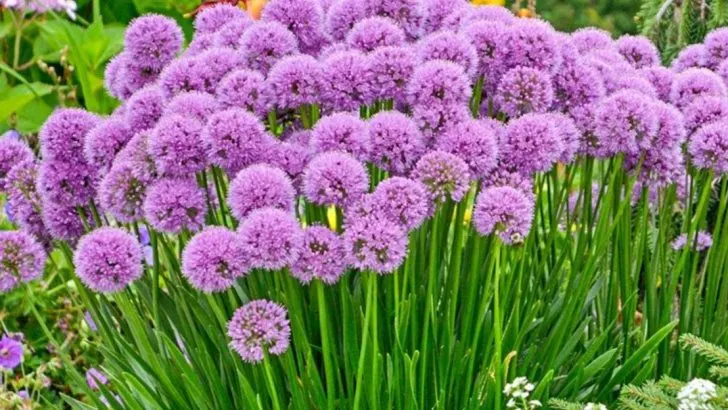There’s something undeniably majestic about purple flowers—they evoke a sense of elegance, mystery, and tranquility in any garden. Whether you’re leaning into soft lavenders or bold, jewel-toned violets, planting purple blooms instantly gives your space a regal, luxurious feel. These hues pair beautifully with silvers, whites, and greens, creating a timeless look that feels both lush and intentional.
These 16 purple beauties aren’t just eye-catching—they’re also garden workhorses. Many of them attract butterflies and bees, thrive in a variety of sun and soil conditions, and bloom across long stretches of the season. If you’re dreaming of a space that feels like it belongs in a palace garden, these flowers will help you plant that royal vibe—without needing a royal budget.
Lavender

Lavender’s soft, aromatic blooms whisper tranquility into the garden. Known for its calming scent, it invites relaxation and peace. This perennial plant thrives in sunny spots, showcasing its pastel purple spikes. Ideal for borders or rock gardens, lavender attracts pollinators like bees and butterflies. Its silvery foliage adds contrast, while its scent deters pests. Whether freshly cut or dried, lavender’s fragrance lingers, offering a sensory delight. Perfect for an aromatic garden experience, it’s not just a feast for the eyes but also for the soul. Plant lavender for a touch of Provence at home.
Lilac
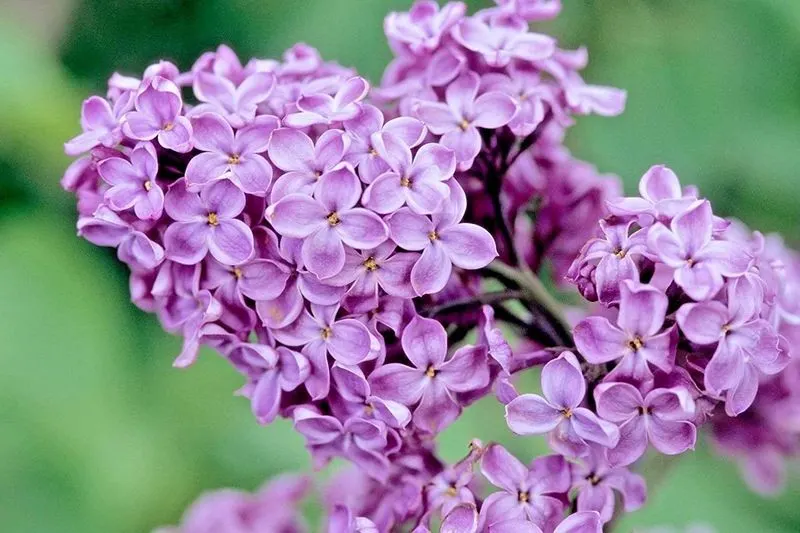
Lilacs charm with their nostalgic fragrance and lush clusters of blooms, reminiscent of springtime memories. These deciduous shrubs burst into color in late spring, painting gardens in shades of light purple. Lilacs prefer well-drained soil and full sun, rewarding gardeners with vibrant displays and a sweet aroma. As cut flowers, they brighten interiors with their cheerful presence. Their hardy nature makes them a garden staple, attracting pollinators while resisting deer. Lilacs symbolize renewal and confidence, infusing gardens with a sense of optimism and joy. Plant them for a timeless, fragrant addition to your landscape.
Wisteria
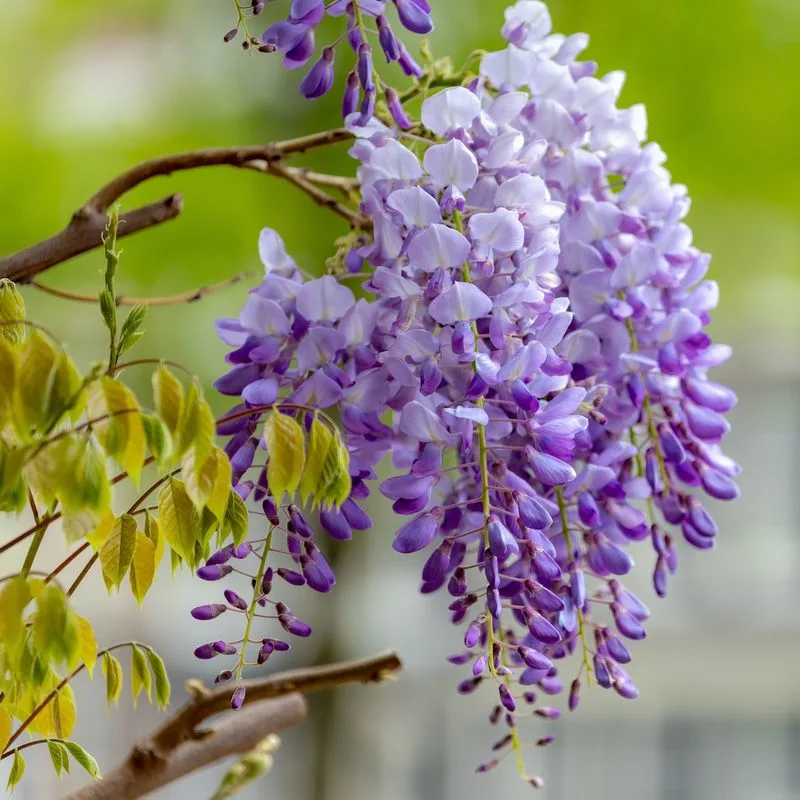
Wisteria’s cascading blooms create a fairytale-like setting, draping pergolas and trellises with elegance. These vigorous climbers, with their enchanting purple clusters, transform structures into living sculptures. Requiring sturdy support and regular pruning, wisteria offers a spectacular spring display. Its sweet fragrance fills the air, inviting leisurely garden strolls. Known for its longevity, a well-established wisteria can live for decades, becoming a cherished part of the landscape. Ideal for romantic garden settings, its lush beauty captivates all who encounter it. Consider wisteria for a dramatic, floral statement in your garden.
Iris
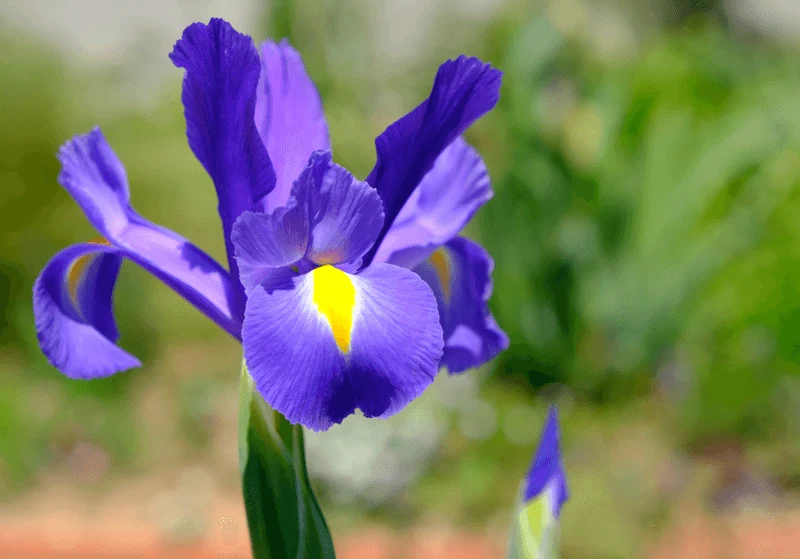
Irises add drama and flair with their striking, sword-like foliage and bold blooms. Known for their intricate patterns and diverse colors, these perennials thrive in sunny locations with well-drained soil. Purple irises, in particular, evoke a sense of regality, standing tall in borders or as focal points. Their unique structure and variety make them a favorite among gardeners and florists alike. As a symbol of wisdom and valor, irises bring both beauty and meaning to the garden. Easy to grow and maintain, they are perfect for those seeking an elegant floral display.
Petunia
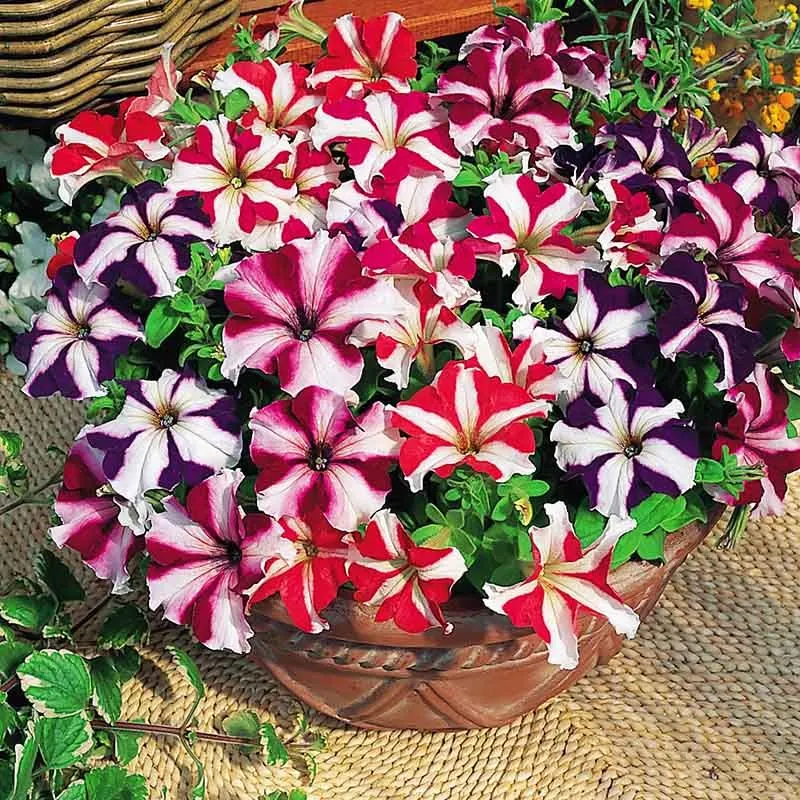
Petunias offer vibrant color and versatility, brightening up garden beds and containers alike. With their trumpet-shaped blooms, they create a lively display throughout the summer. Purple petunias, in particular, add a rich pop of color, enhancing garden aesthetics. These annuals thrive in full sun and well-drained soil, requiring regular watering and deadheading to flourish. Their resilience and long blooming period make them a favorite for adding continuous color to gardens. Whether cascading from hanging baskets or lining pathways, petunias bring joy and vibrancy to any outdoor space.
Verbena
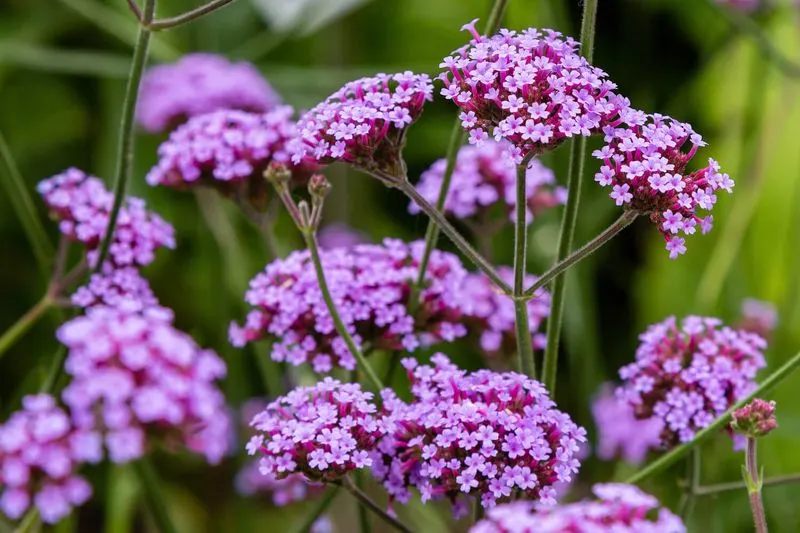
Verbena’s delicate clusters provide a continuous splash of color from spring to fall. Known for attracting butterflies, these perennial favorites thrive in sunny areas with well-drained soil. Purple verbena, with its small but vibrant blooms, adds texture and interest to borders and containers. Their dense clusters create a visually appealing display, perfect for mixed plantings. Drought-tolerant and easy to care for, verbena is ideal for both novice and experienced gardeners. Its cheerful blooms and versatility make it a valuable addition to any garden, providing color and life throughout the seasons.
Clematis
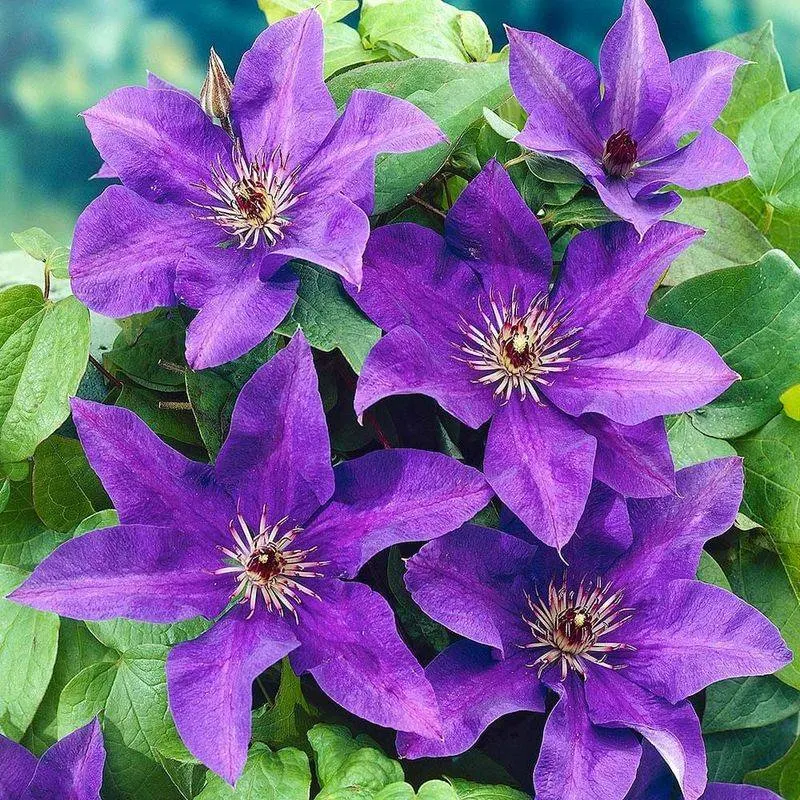
Clematis vines offer elegance and charm, gracing trellises and fences with their large, star-shaped flowers. These climbers thrive in sunny locations with cool, shaded roots. With a wide variety of purple shades, from deep violet to light lavender, clematis provides visual interest and color diversity. Known for their ability to create vertical gardens, they add height and drama to outdoor spaces. Regular pruning keeps them healthy and promotes abundant blooms. Whether paired with roses or allowed to shine on their own, clematis is a standout choice for garden enthusiasts.
Allium
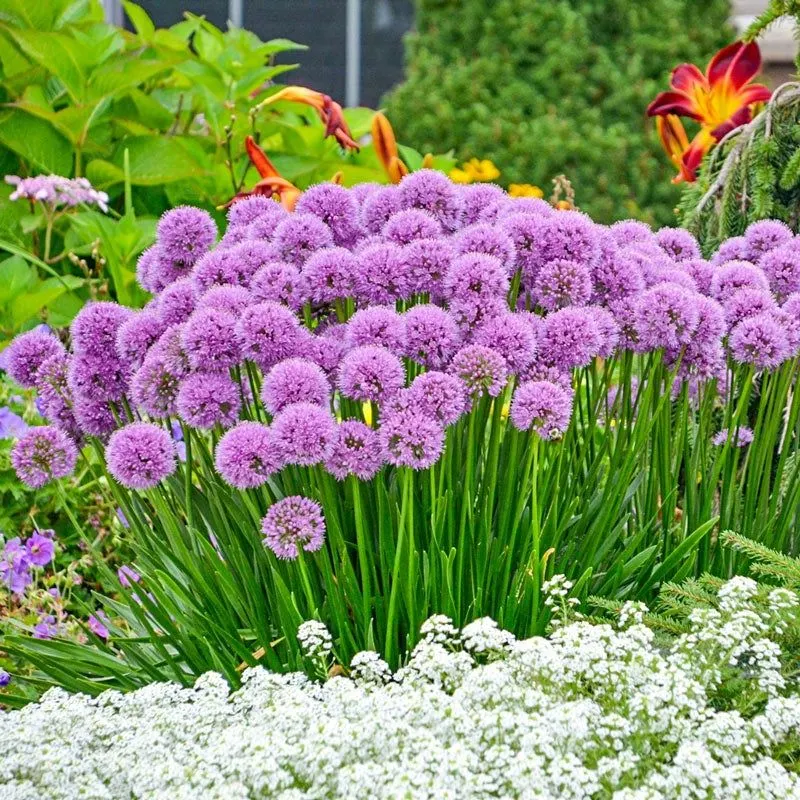
Alliums stand out with their distinctive, globe-shaped blooms that add architectural interest to gardens. These perennials, part of the onion family, feature tall stems topped with spherical clusters of purple flowers. Requiring full sun and well-drained soil, alliums are both drought-resistant and low maintenance. Their unique appearance makes them ideal for adding structure, whether in borders or as standalone features. As they bloom in late spring to early summer, alliums provide a seamless transition between seasonal displays. Their striking form and color make them a must-have for creative garden designs.
Aster
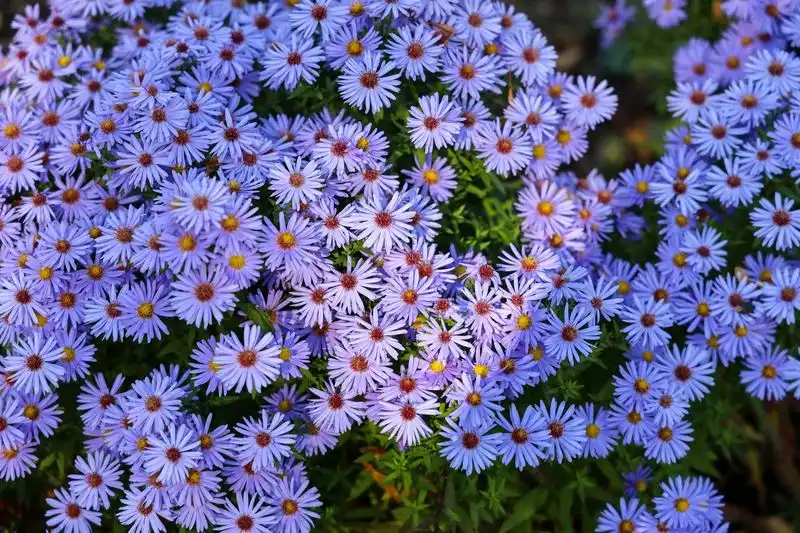
Asters bring a burst of color and charm to late summer and fall gardens. With their daisy-like blooms, they provide a cheerful display as other plants fade. Purple asters, with their rich hues, create a striking contrast against autumnal foliage. These perennials thrive in full sun and are appreciated for their hardiness and long blooming period. Perfect for borders and wildflower gardens, asters attract butterflies, enhancing biodiversity. Their star-like shape and vibrant colors make them a delightful addition to any garden, offering a splash of color when it’s needed most.
Campanula
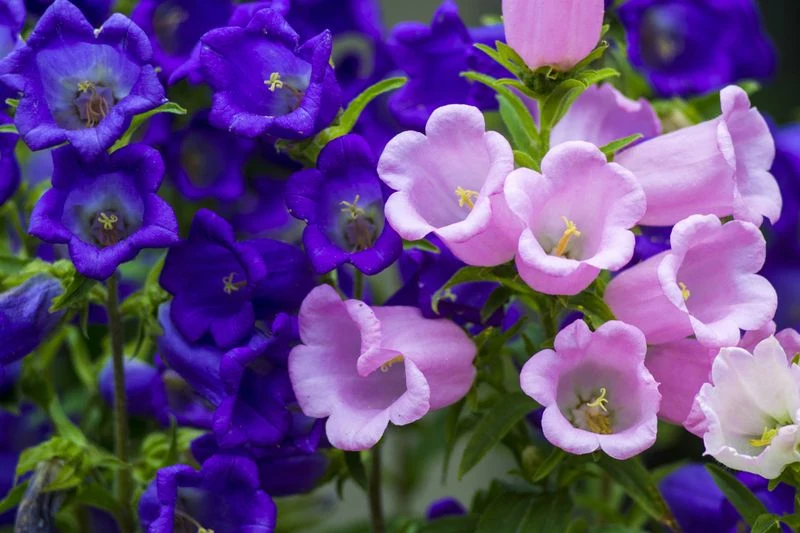
Campanula, or bellflower, enchants with its charming bell-shaped blooms in shades of purple. These perennials are versatile, thriving in both sun and partial shade. Their delicate flowers create a whimsical feel, perfect for cottage gardens or mixed borders. Campanula’s long blooming season, from late spring to early fall, ensures continuous color. Low maintenance and hardy, they are a favorite for gardeners seeking easy-to-grow plants. Their cascading blooms make them ideal for hanging baskets or rock gardens. Campanula adds a touch of fairy-tale magic, inviting wonder and delight into any space.
Salvia
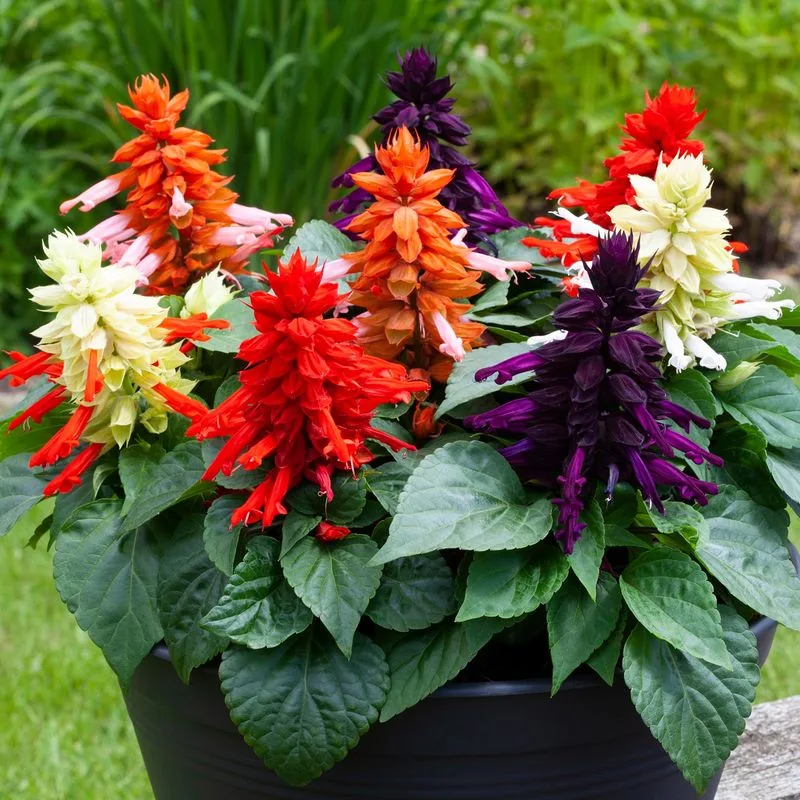
Salvia’s sturdy spikes and vibrant purple blooms bring vertical interest to gardens. Known for attracting pollinators, these hardy perennials thrive in sunny, well-drained conditions. Purple salvia adds a striking element to borders and containers, with its long-lasting flowers and aromatic leaves. Easy to grow and drought-tolerant, it’s a favorite for sustainable gardening. Salvia’s upright form and rich color offer a bold statement, complementing other garden plants. Regular deadheading encourages repeat blooming, ensuring a continuous display of color. Perfect for creating dynamic garden compositions.
Hydrangea

Hydrangeas captivate with their large, mophead blooms and vibrant colors. Purple hydrangeas, in particular, exude a sense of luxury and elegance. These deciduous shrubs thrive in partial shade with fertile, well-drained soil. Their color can vary based on soil pH, offering fascinating garden experiments. Ideal for borders or as focal points, hydrangeas provide seasonal interest from summer through fall. Their expansive blooms make stunning cut flowers, brightening indoor arrangements. Known for their adaptability, hydrangeas offer beauty and versatility, enhancing garden landscapes with their lush, colorful presence.
Foxglove
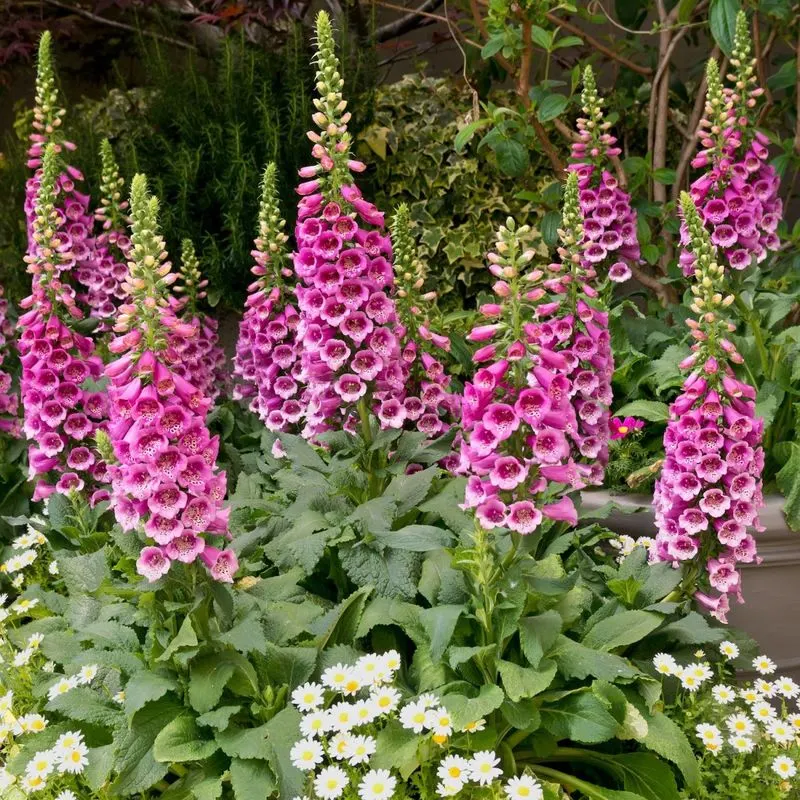
Foxgloves add a touch of drama with their towering spires of tubular flowers. These biennials thrive in partial shade and well-drained soil, offering a spectacular display in the early summer. Purple foxgloves, with their elegant form, create a striking vertical element in gardens. Known for attracting bees and hummingbirds, they enhance biodiversity. Their distinct appearance makes them ideal for cottage gardens or woodland settings. While beautiful, it’s important to handle foxgloves with care, as all parts are toxic if ingested. Foxgloves bring a touch of the wild, enchanting garden spaces with their grace.
Lupine
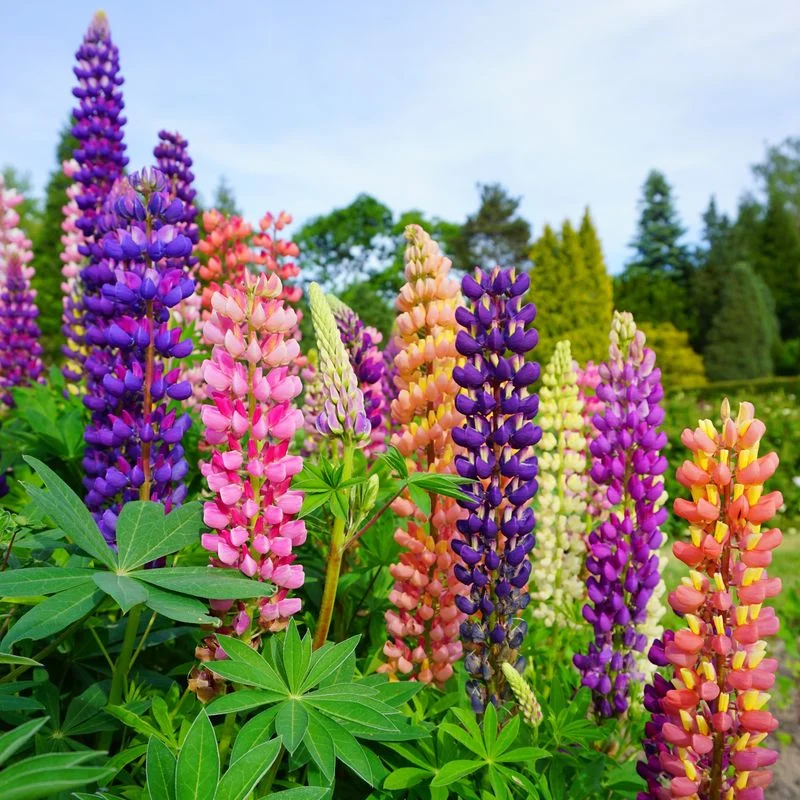
Lupines stand tall with their spiky, vibrant blooms, adding vertical interest and color. These perennials thrive in full sun with well-drained soil, producing pea-like flowers in stunning shades of purple. Perfect for wildflower gardens or naturalistic settings, lupines attract bees and butterflies, supporting pollinator health. Their unique foliage and striking form make them a focal point in any garden design. Easy to grow from seed, lupines offer a sustainable choice for garden enthusiasts. With their rich color and dramatic presence, lupines bring a sense of adventure and wild beauty to outdoor spaces.
Viola
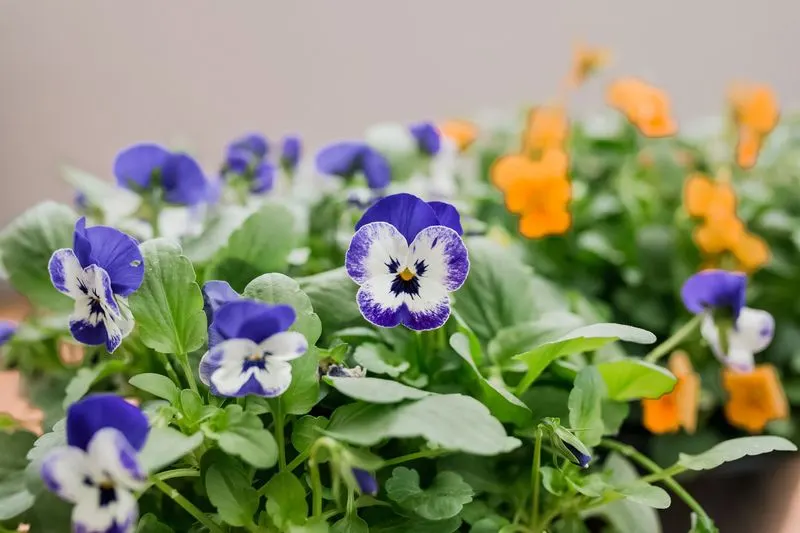
Violas charm with their dainty blooms and cheerful faces, offering a splash of color throughout the year. These hardy annuals or short-lived perennials thrive in cool, moist conditions, perfect for spring and fall displays. Purple violas add depth and richness, enhancing garden aesthetics with their intricate patterns. Ideal for borders, containers, or as ground cover, violas are versatile and easy to grow. Their edible flowers make a whimsical addition to salads or desserts. Whether planted en masse or as accents, violas provide continuous color and delight, capturing the heart with their simple beauty.
Morning Glory

Morning glories captivate with their vibrant, trumpet-shaped blooms that open to greet the sun. These annual climbers thrive in full sun, quickly covering fences and trellises with lush foliage and colorful flowers. Purple morning glories, with their striking hues, create a stunning visual impact. Ideal for adding vertical interest, they provide a dynamic element to garden designs. Although short-lived, their blooms refresh daily, offering a continuous display. Easy to grow from seed, morning glories bring a sense of wonder and vitality, making them a cherished addition to any garden space.

